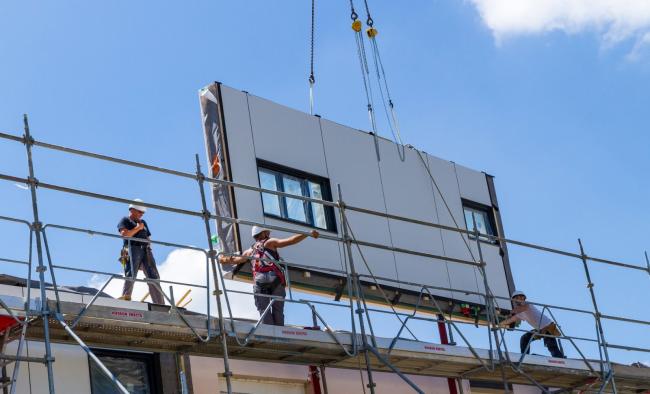Articles Menu

July 12th 2021
There is no pathway to achieving Canada’s greenhouse gas reduction commitments that does not include retrofitting the country’s millions of residential and commercial buildings.
At the current pace, it will take 142 years to retrofit all low-rise residential buildings, and 71 years to retrofit all commercial floor space. And each retrofit must deliver deeper energy savings than standard practice, combined with switching to zero-carbon energy sources. A challenge of this magnitude calls for a national mission to transform our homes and buildings for a post-fossil fuel, climate-friendly future.
Building retrofits are high on the federal government’s priority list. “Cutting energy waste” in buildings is the first chapter of the new climate plan. So far, we see a ramp-up of traditional policies, like grants and loans for individual homeowners. While these policies have their place, they are unlikely to meet climate goals without a strategy to change our current retrofit delivery models and reshape how retrofit markets are organized.
There is reason to believe transformational change is possible. Building retrofits are now constrained by existing policy and market environments. Energy-efficiency programs are evaluated using restrictive and static cost-benefit analyses, focused on short-term results. Under this market structure, supply chains are fragmented and building owners must navigate a confusing array of contractors.
However, this is only one model. We can reshape retrofit markets and policies to meet a net-zero emissions goal. The most prominent example is energiesprong in the Netherlands, which co-ordinates large-scale retrofits of affordable housing to spur supply chain innovations, such as prefabricated walls and all-in-one HVAC systems.
Retrofitting our buildings for climate change must coincide with a strategy to trigger economies of scale and learning. We could see work crews specialized in tasks like air sealing; specialized equipment like small-scale cranes and diggers; better application of technologies like software, drones & 3D printing to the retrofit space; and increased understanding of ways to enhance customer value, guarantee performance, and finance energy savings.
If we can dramatically accelerate retrofits, we will eliminate fossil fuel use in buildings while producing societal benefits, such as improved health, reduced energy poverty, and support for reconciliation with Indigenous peoples through high-quality housing.
Widespread building retrofits can also enable larger economy-wide decarbonization. There is the potential to free up enough electricity to supply 10 million electric vehicles even as we electrify all buildings. This is because building envelope upgrades reduce electric heating demands, and many Canadian buildings use less-efficient electric heating systems that can be replaced by heat pumps.
We can reshape retrofit markets and policies to meet a net-zero emissions goal, write @br_haley of @EfficiencyCAN and Ralph Torrie. #cdnpoli #ClimateAction - Twitter
A challenge of this magnitude lends itself to a mission-oriented policy approach. This involves establishing a societally relevant goal, asking what resources are required to achieve it, and inviting multiple bottom-up solutions to improve performance.
Canada’s mission can establish an ambitious, but possible in theory, goal of retrofitting all buildings by 2035. Retrofit process performance objectives to achieve this goal should include decreasing retrofit costs by at least 50 per cent, increasing the speed of a retrofit to days instead of weeks, and enhancing value by achieving deep energy savings, improving indoor environmental quality and resilience against climate change impacts.
To organize the mission, we suggest creating a national innovation-oriented organization, as well as on-the-ground market development teams throughout the country. These teams will reshape how existing retrofit markets work by initiating large-scale projects that co-ordinate building owners, supply chains, and local policymakers to meet transformative retrofit goals.
This is a mission that Canada can take on. It involves the creation of new systems for the widespread use of technologies to meet the challenges of our harsh geography, similar to Canadian successes in long-distance transmission and extracting oil from sand.
This approach is also the appropriate response to the climate emergency that the federal government declared two years ago. The response to the pandemic has shown us what an emergency response looks like and what we are capable of when we work together to face down a crisis. A national mission that sets ambitious goals and invites transformative solutions is what we need now to effectively respond to the climate emergency.
Brendan Haley and Ralph Torrie are co-authors of “Canada’s Climate Retrofit Mission: Why the climate emergency demands an innovation-oriented policy for building retrofits,” a report published by Efficiency Canada.
[Top photo: One ol the many Energiesprong retrofits in Longeau-Percey, France. Since its origins in the Netherlands, the Energiesprong model has moved to other countries. Photo by Fabrice Singevin]